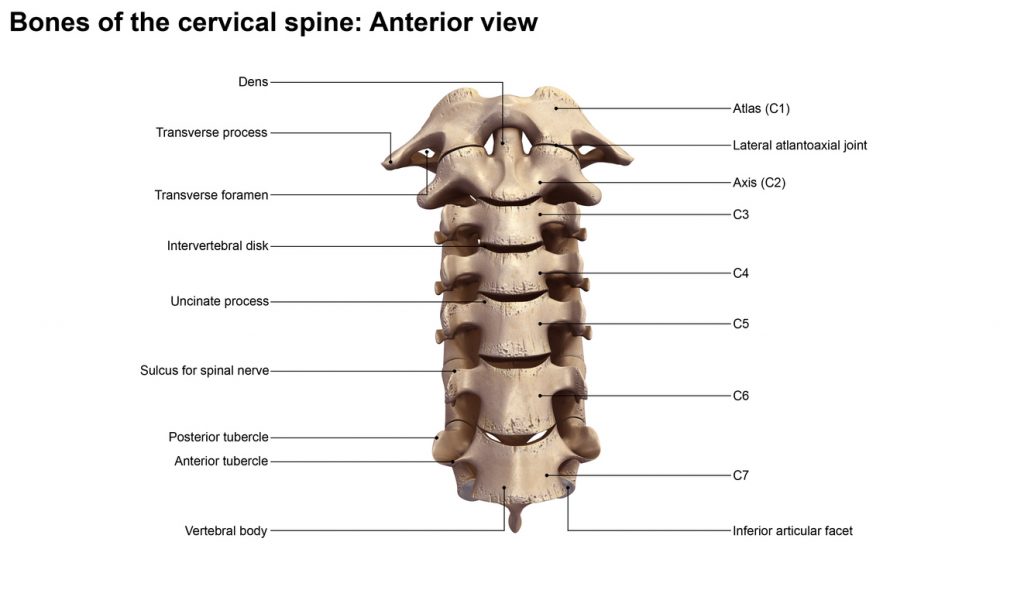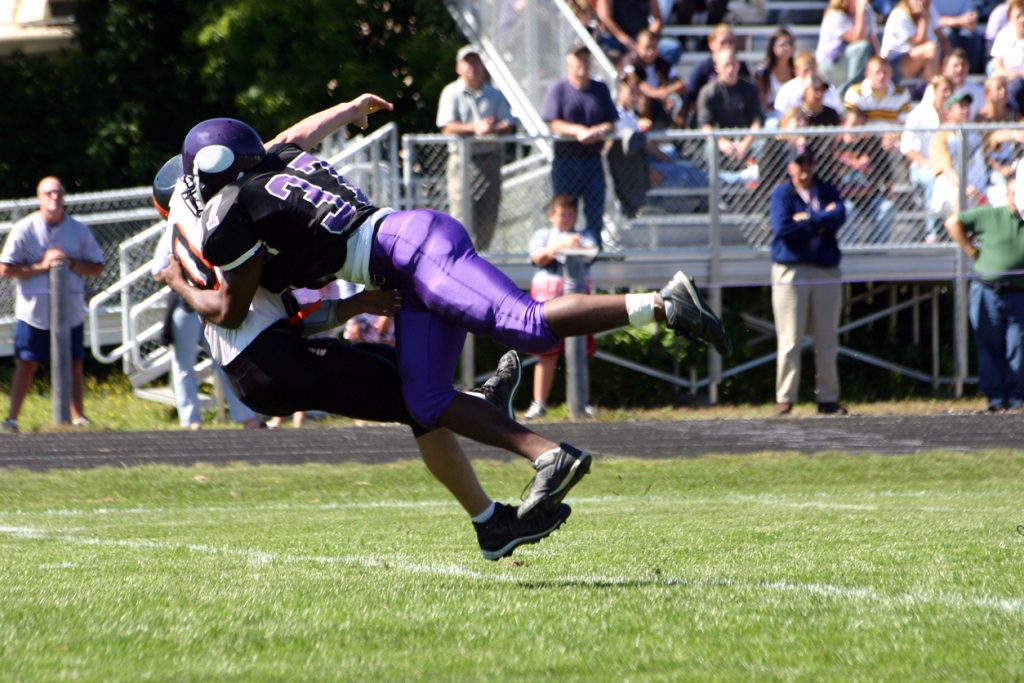Neck injuries of varying degrees can be attributed to sports activities. Injuries to the neck and cervical spine are more common in contact sports such as football, lacrosse, basketball, and soccer. However, they may also occur while participating in non-contact sports including golf, tennis, and gymnastics. Rule changes in recent years and better protective equipment have enhanced the safety of athletes and helped them avoid the more serious injuries. In spite of these efforts, injuries to the neck and spinal cord still do occur.
Cervical Spine
The cervical spine is made up of seven vertebrae with discs between the vertebrae that function like shock absorbers. Muscles support the neck, tendons connect muscle to bone, and ligaments are bands of tissue that attach bone to bone. All these parts stabilize the neck so that it can support the head.

Sports Injuries
A fall, tackle, or high speed collision between athletes can put enough force on the neck to cause injury. Injuries of the soft tissues may be strains or sprains. Whiplash type injuries are also common. Hyperextension, where the neck is flung backward, and hyperflexion, which forces the neck forward beyond its normal limits, can tear ligaments. When the neck gets pushed forcefully to the side, nerves can be damaged causing extreme pain to radiate from the shoulder down the arm. A neck fracture, resulting from a blow to the head or sudden twist of the neck, is a serious injury. Unfortunately, a complete spinal cord injury can result in paralysis or death.

Symptoms of a neck injury may include some of the following:
- Localized neck pain or tenderness
- Neck stiffness
- Swelling or bruising
- Pain radiating down the arm
- Loss of sensation in the arms, body, or legs
- Muscle weakness or paralysis in the arms or legs
- Difficulty breathing
Do not move anyone with a possible cervical spine or neck injury until medical personnel can evaluate and stabilize the patient. Moving someone before they have been stabilized can cause further damage.
Diagnostic Testing
A person with a sports related neck injury should receive a full neurological examination as soon as possible. Diagnostic tests may include x-rays, a CT scan, or an MRI. Treatment of a neck injury will depend on the specific diagnosis. A minor injury may be treated with anti-inflammatory medications or muscle relaxers. Ice therapy to the neck can reduce swelling and pain. After 2-3 days of icing the injury, moist heat can be applied if the swelling has subsided. Mild injuries may resolve in a few days to several weeks. Physical therapy may be prescribed once the acute symptoms are gone. Exercises can strengthen the neck and reduce the odds of reinjuring it. Massage and ultrasound therapy may decrease inflammation and increase range of motion.
A neck fracture is a much more serious injury. A neck brace can be worn until the bone heals if the break does not affect the spinal cord. Sometimes surgery is necessary to treat a more complicated fracture. Surgery can repair the vertebrae, remove damaged discs, and relieve pressure on the spinal cord. Neck fractures that cause severe injury to the spinal cord may cause permanent damage including paralysis.


